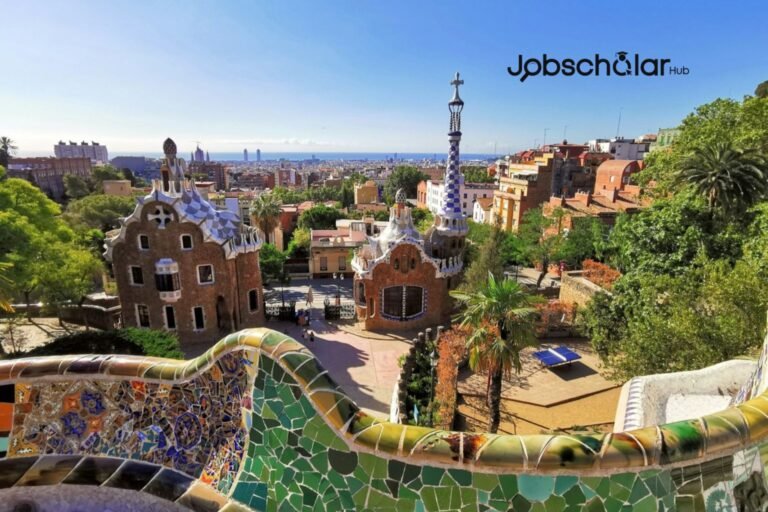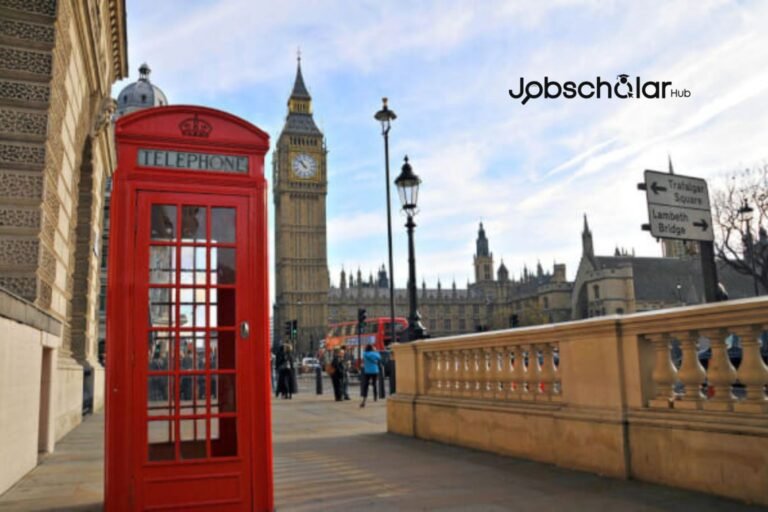The Spain retirement visa offers retirees an incredible opportunity to live in Europe. This visa program welcomes people with steady income who want sunny weather year-round. The Spain retirement visa lets you explore beautiful beaches, historic cities, and vibrant culture.
You cannot work with this visa, but most retirees find Spain affordable enough to live comfortably. The application process takes several months but opens doors to permanent European residency. Over 50,000 people already use their Spain retirement visa to enjoy Mediterranean lifestyle daily.
Lets get right into all you need to know about the Spain retirement visa.
Table of contents
- What Is the Spain Retirement Visa?
- How Much Money Do I Need for a Spain Retirement Visa?
- What Documents Do I Need for a Spain Retirement Visa?
- How Do I Apply for a Spain Retirement Visa?
- Where Can I Use My Spain Retirement Visa?
- How Long Does a Spain Retirement Visa Last?
- Frequently Asked Questions
- Conclusion
- References
- Recommendations
What Is the Spain Retirement Visa?

The Spain retirement visa is officially called the Non-Lucrative Visa by Spanish immigration authorities. This program allows foreigners to live in Spain without working or running businesses. You need steady income from outside Spain to qualify for this residency option.
The visa targets retirees, early retirees, and people with investment income who want European living. Spain created this program to attract financially stable residents who contribute to local economies. Your Spain retirement visa grants legal residency but prohibits employment completely.
Duration starts at one year initially. Renewals extend to two years each time afterward. After five years total, permanent residency becomes available.
Key facts about the Spain retirement visa:
- Official name: Non-Lucrative Visa (NLV)
- Purpose: Living in Spain without working
- Duration: 1 year initially, renewable up to 5 years
- Work allowed: No – you cannot work in Spain with this visa
- Family: You can include spouse and children under 18
Who can apply for a Spain retirement visa:
- Retirees with pensions or savings
- People with investment income
- Anyone with passive income who doesn’t need to work
- Those wanting to spend retirement years in Spain
What you CAN do with a Spain retirement visa:
- Live anywhere in Spain full-time
- Travel freely within the EU for up to 90 days
- Bring your spouse and children
- Access private healthcare
- Buy property in Spain
- Open Spanish bank accounts
What you CANNOT do:
- Work for Spanish companies
- Start a business in Spain
- Access public healthcare immediately
- Apply for unemployment benefits
The Spain retirement visa is ideal if you have enough money saved or receive regular pension payments to support yourself without working.
You should read: Is Living in Spain Good? Complete Guide to Life in Spain 2025
How Much Money Do I Need for a Spain Retirement Visa?

Getting a Spain retirement visa means proving you have enough money coming in each month. Single applicants need €2,400 monthly income from pensions, investments, or savings accounts. Married couples require €3,000 total. Each child adds another €600 to the requirement.
Acceptable income sources for Spain retirement visa:
- Government pensions (Social Security, state pensions)
- Private pension plans and 401k withdrawals
- Investment income from stocks, bonds, funds
- Rental income from properties
- Bank savings interest
- Life insurance payouts
- Trust fund payments
Income proof you need:
- Bank statements showing 6 months of regular income
- Pension award letters
- Investment account statements
- Tax returns from last year
- Letter from financial advisor or accountant
Important money rules:
- Income must be passive (not from working)
- Money must come from outside Spain
- You need to show the income will continue
- Savings alone can work if large enough to last years
- Consulates typically give more weight to savings than monthly income
You should read: H4 Visa Interview Questions: Avoid These Mistakes!
What Documents Do I Need for a Spain Retirement Visa?

Getting a Spain retirement visa requires specific paperwork from your home country. You need a valid passport with at least one year validity, proof of money, medical insurance, and a clean criminal record. The complete list of documents include:
Personal documents:
- Valid passport (must be valid for at least 1 year)
- Birth certificate (original with apostille)
- Marriage certificate if married (original with apostille)
- Divorce decree if divorced (original with apostille)
Financial documents:
- Bank statements from last 6 months
- Pension award letters or statements
- Investment account statements
- Tax returns from previous year
- Letter from bank or financial advisor confirming income
Health and background documents:
- Health insurance valid in Spain with €30,000 coverage per person
- Medical certificate from your doctor (dated within 90 days)
- Criminal background check (FBI check for Americans, RCMP for Canadians, etc.)
Spain-specific documents:
- Proof of where you’ll live in Spain (rental contract or hotel booking)
- Completed visa application form
- Passport photos (recent, white background)
Document preparation steps:
- Get apostille certification: All personal documents need apostille from your government
- Translate to Spanish: Hire certified translators for all documents
- Get medical insurance: Must cover Spain with minimum €30,000 coverage
- Criminal background check: Takes 2-8 weeks depending on your country
- Medical exam: See your doctor for health certificate
Timeline for documents: Start gathering documents 3-4 months before applying. Criminal checks and apostille certifications take the longest time.
Common document mistakes:
- Expired medical certificates (must be recent)
- Wrong type of health insurance
- Missing apostille on birth certificates
- Bank statements too old (must be current)
- Criminal check from wrong agency
You should read: Do You Know The 7 Hidden Secrets Behind Visa Denied?
How Do I Apply for a Spain Retirement Visa?

Applying for a Spain retirement visa involves several steps at your local Spanish consulate. The process takes 2-4 months from start to finish.
Step-by-step Spain retirement visa application:
1: Prepare all documents (6-8 weeks)
- Gather personal, financial, and health documents
- Get apostille certifications on official documents
- Translate everything to Spanish with certified translators
- Get comprehensive health insurance covering Spain
- Complete criminal background check from your country
2: Schedule consulate appointment (1-4 weeks wait)
- Find your nearest Spanish consulate
- Book appointment online or by phone
- Popular consulates: New York, Los Angeles, Toronto, London, Sydney
- Bring appointment confirmation to your visit
3: Submit application at consulate
- Bring completed application forms, valid passport, and copies of all documents
- Pay visa fee (usually $200-$400)
- Provide biometric data – facial photo and fingerprints
- Answer questions about your retirement plans
4: Wait for decision (30-90 days)
- Consulate reviews your application
- They may ask for additional documents
- Officials may conduct an interview about your application
- Processing times vary by consulate and season
5: Collect your Spain retirement visa
- Return to consulate to collect passport with visa
- Check all details are correct
- Visa is valid for 90 days for travel to Spain
6: Travel to Spain and get residence card
- Enter Spain within 90 days of visa approval
- Register with local police within 30 days
- Apply for residence card (TIE) within 30 days
- Get NIE number (foreigner identity number)
Application tips:
- Apply 4-6 months before planned move
- Double-check all document requirements
- Bring extra copies of everything
- Be honest about your financial situation
- Show strong ties to Spain (property rental, etc.)
Read also: How to Get Spain’s Digital Nomad Visa: Complete Guide
Where Can I Use My Spain Retirement Visa?

Your Spain retirement visa allows residence anywhere in the country. Costa del Sol attracts many English-speaking retirees. Valencia offers excellent healthcare and lower costs, madrid provides urban amenities and cultural attractions.
You must spend 183 days yearly in Spain to maintain residency status. Travel within Europe requires no additional visas for short trips. Property purchases face no restrictions with your Spain retirement visa status.
Healthcare access starts with private insurance initially. After becoming a tax resident, public healthcare becomes available.
Factors to consider when choosing:
- Healthcare facility quality and proximity
- English-speaking expat community size
- Cost of living and housing availability
- Climate preferences (coastal vs inland)
- Cultural attractions and activities
- Distance to international airports
You can try different areas during your first year and then settle in your favorite location for long-term living.
Check out: How to Write a Visa Invitation Letter For a UK Visa (With Sample)
How Long Does a Spain Retirement Visa Last?

Your Spain retirement visa starts as a one-year permit and can be renewed multiple times. You must spend at least 183 days per year in Spain to maintain residency.
Spain retirement visa timeline:
First visa: 1 year duration First renewal: 2 years duration
Second renewal: 2 years duration After 5 years: Apply for permanent residency After 10 years: Apply for Spanish citizenship
Renewal requirements:
- Still meet income requirements (€28,800+ annually)
- Maintain health insurance coverage
- Clean criminal record (no new crimes)
- Prove you lived in Spain (rent receipts, utility bills)
- Pass basic Spanish language test (A2 level) after 5 years
Residency requirements:
- Spend minimum 183 days per year in Spain
- Cannot be absent for more than 6 months continuously
- Keep proof of time spent in Spain (travel records, receipts)
- Maintain legal address registration in Spain
Path to permanent residency: After 5 years with Spain retirement visa, you can apply for permanent residency (long-term resident status). This gives you:
- No income requirements anymore
- Right to work in Spain
- Access to public healthcare
- Nearly same rights as Spanish citizens
Path to Spanish citizenship: After 10 years of legal residency, you can apply for Spanish citizenship through naturalization. Requirements include:
- Pass Spanish language test (B2 level)
- Pass Spanish culture and history test
- Prove integration into Spanish society
- Clean criminal record throughout 10 years
Important renewal tips:
- Start renewal process 90 days before expiry
- Keep all financial documents updated
- Maintain continuous health insurance
- Track your days in Spain carefully
- Save all proof of Spanish residence
Read also: Golden Years in Greece: How to Get Your Greece Retirement Visa
Frequently Asked Questions
No, the Spain retirement visa specifically prohibits any paid employment or business activities within Spanish territory.
Your spouse can join your Spain retirement visa application by adding just €7,200 to your annual income.
You must spend minimum 183 days yearly in Spain to maintain your Spain retirement visa residency status.
Yes, your Spain retirement visa allows unrestricted property purchases anywhere throughout Spain without additional government approval needed.
You must maintain minimum income levels throughout your Spain retirement visa period or risk renewal application rejection.
Conclusion
The Spain retirement visa opens amazing possibilities for your golden years. Spain welcomes retirees with steady income and clean backgrounds warmly. The application process requires patience but delivers lifetime benefits for successful applicants. There is the Mediterranean weather, affordable living costs, and excellent healthcare make Spain attractive to thousands yearly.
Your Spain retirement visa provides European Union travel access and potential permanent residency. Start gathering documents early because proper preparation ensures success.
Before you go, read: Dual Citizenship in Italy: Step-by-Step Guide, Pros and Cons, Costs.






